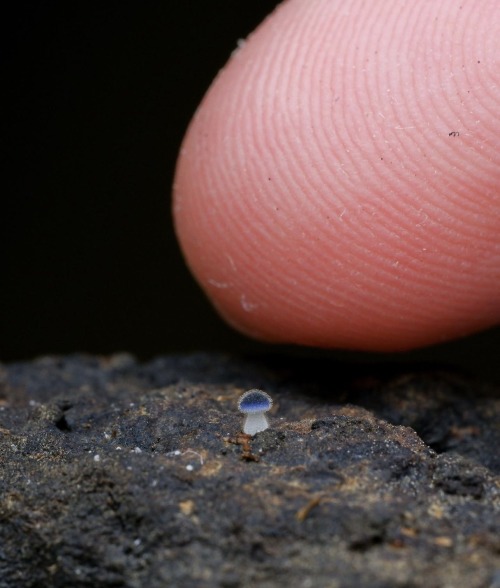近藍蓋小菇 Mycena Subcyanocephala Fungi Translates To The "blue-head" And Measures At Only A Single


近藍蓋小菇 Mycena Subcyanocephala fungi translates to the "blue-head" and measures at only a single millimeter.
More Posts from Rpodnee-blog and Others

In the clouds

A summer day in Anacapri with a young woman and a friar conversing (1884) by Peder Mørk Mønsted
How adorable she is 😊🐈♥️
THESE OLD MEN (THE NORTHERN BOYS) SHOULD BE DOING NUMBERS HERE ON TUMBLR DOT COM !!!!!!!!!
PENANICAL VAGANICAL MECHANICAL MAN!!!!!!!! C'MON!!!

A mannequin at The North Face.
I was wondering last night if it was at all possible to translate sign language poetry into writing, when translating poetry from one spoken language to another that uses the same communication devices is already a headache. So I found a book about sign language poetry (by Rachel Sutton-Spence) and it is a delightful read! At one point the author describes a poem by Clayton Valli about a boat, in which the rising and falling pattern of the words he chose (which are located at different heights in the signing space) evokes the bobbing motion of a boat on the water as it approaches a bridge. And, okay, it will never be the same thing but you can tinker with written words to create similar effects, like how Victor Hugo’s poem The Djinns uses rising and falling line length to convey quietness then frantic action then a return to stillness.
Then the author analyses a Christmas ASL poem by Dorothy Miles and at first you’re like, this is translatable—she lists things children ask for Christmas, and includes signs like “pets” and “cake” which both involve touching the back of one hand with the other, creating a visual rhyme. The English translation pairs “pets” with “candy cigarettes” to preserve the rhyme. The author adds that symmetry in signed poetry is comparable to assonance: instead of signing ‘2 people walking’ with one hand the poet might sign ‘1 person walking’ with the right hand and ‘1 person walking’ with the left hand, for poetical effect. As English doesn’t have this opportunity for symmetry, you can translate the intent behind this deliberate, aesthetic symmetry as a rhyme. But then the author goes on to describe how Miles uses gentle, fluttering-open ‘5′ handshapes to convey a feeling of magic and excitement, and adds extra finger-wriggling or fluttering to some signs to make them ‘sparkle’, so the poem goes something like magic-shivers-up-arms, magic-run-downstairs, magic-feel-bumps-through-stocking and as a translator, how do you not ruin the specific charm of this poem?? You would have to draw actual sparkles around every verse to convey a similar effect.
I really love poetry for how great it is at making us aware of all the resources and hidden treasures of our own language, that we often overlook in everyday life, but I also love the other side of the coin, how poetry in translation gleefully makes us aware of all the cool things our language lacks.










vegetable varieties by Ernest Benary, The Album Benary (1876)


Saint Olga by Milhail Nesterov
Oil on canvas, (1892-1893)
She's so perfect she just goes right back to doing her thing
-
 robertsoliver liked this · 4 days ago
robertsoliver liked this · 4 days ago -
 robertsoliver reblogged this · 4 days ago
robertsoliver reblogged this · 4 days ago -
 catsandwildlife reblogged this · 6 days ago
catsandwildlife reblogged this · 6 days ago -
 sparklingchest reblogged this · 1 week ago
sparklingchest reblogged this · 1 week ago -
 justhowmanywaffles reblogged this · 1 week ago
justhowmanywaffles reblogged this · 1 week ago -
 justhowmanywaffles liked this · 1 week ago
justhowmanywaffles liked this · 1 week ago -
 persianflaw liked this · 1 week ago
persianflaw liked this · 1 week ago -
 swarovskinipples reblogged this · 1 week ago
swarovskinipples reblogged this · 1 week ago -
 darkmatter-swordsman reblogged this · 1 week ago
darkmatter-swordsman reblogged this · 1 week ago -
 thevibrantcolor reblogged this · 1 week ago
thevibrantcolor reblogged this · 1 week ago -
 ru63n liked this · 2 weeks ago
ru63n liked this · 2 weeks ago -
 perfectflowerstar liked this · 2 weeks ago
perfectflowerstar liked this · 2 weeks ago -
 goldenfrogstudio liked this · 2 weeks ago
goldenfrogstudio liked this · 2 weeks ago -
 celipa23 liked this · 2 weeks ago
celipa23 liked this · 2 weeks ago -
 sc3n3-b1tch liked this · 2 weeks ago
sc3n3-b1tch liked this · 2 weeks ago -
 yollble liked this · 2 weeks ago
yollble liked this · 2 weeks ago -
 uchiha-itachi-amaterasu reblogged this · 2 weeks ago
uchiha-itachi-amaterasu reblogged this · 2 weeks ago -
 fungisung liked this · 3 weeks ago
fungisung liked this · 3 weeks ago -
 panickedpeach liked this · 3 weeks ago
panickedpeach liked this · 3 weeks ago -
 carrion-the-whole-team liked this · 4 weeks ago
carrion-the-whole-team liked this · 4 weeks ago -
 human2106 liked this · 4 weeks ago
human2106 liked this · 4 weeks ago -
 micahmumbles reblogged this · 1 month ago
micahmumbles reblogged this · 1 month ago -
 thedancingwalrus-blog reblogged this · 1 month ago
thedancingwalrus-blog reblogged this · 1 month ago -
 hypopapillon liked this · 1 month ago
hypopapillon liked this · 1 month ago -
 buonsai liked this · 1 month ago
buonsai liked this · 1 month ago -
 stuffofwhimsy reblogged this · 1 month ago
stuffofwhimsy reblogged this · 1 month ago -
 monochromaticclowngirl liked this · 1 month ago
monochromaticclowngirl liked this · 1 month ago -
 damelio-designs liked this · 1 month ago
damelio-designs liked this · 1 month ago -
 peer2peer liked this · 1 month ago
peer2peer liked this · 1 month ago -
 mothyr reblogged this · 1 month ago
mothyr reblogged this · 1 month ago -
 leequ reblogged this · 1 month ago
leequ reblogged this · 1 month ago -
 bootlegpikaxu liked this · 1 month ago
bootlegpikaxu liked this · 1 month ago -
 gelatinosum reblogged this · 1 month ago
gelatinosum reblogged this · 1 month ago -
 storm89 reblogged this · 2 months ago
storm89 reblogged this · 2 months ago -
 mis-mcgifsten reblogged this · 2 months ago
mis-mcgifsten reblogged this · 2 months ago -
 clarkia248 liked this · 2 months ago
clarkia248 liked this · 2 months ago -
 mimocrocodilelol liked this · 2 months ago
mimocrocodilelol liked this · 2 months ago -
 5-00-4 liked this · 2 months ago
5-00-4 liked this · 2 months ago -
 howlingflame345 liked this · 2 months ago
howlingflame345 liked this · 2 months ago -
 canibal34 liked this · 2 months ago
canibal34 liked this · 2 months ago -
 assthetics-andart reblogged this · 2 months ago
assthetics-andart reblogged this · 2 months ago -
 rodeobam reblogged this · 2 months ago
rodeobam reblogged this · 2 months ago -
 queenbbbree liked this · 2 months ago
queenbbbree liked this · 2 months ago -
 fuzzystudentwhispers liked this · 2 months ago
fuzzystudentwhispers liked this · 2 months ago -
 candlesoul reblogged this · 2 months ago
candlesoul reblogged this · 2 months ago -
 candlesoul liked this · 2 months ago
candlesoul liked this · 2 months ago -
 schlumpfleiin reblogged this · 2 months ago
schlumpfleiin reblogged this · 2 months ago -
 schlumpfleiin liked this · 2 months ago
schlumpfleiin liked this · 2 months ago -
 aztecblue liked this · 2 months ago
aztecblue liked this · 2 months ago